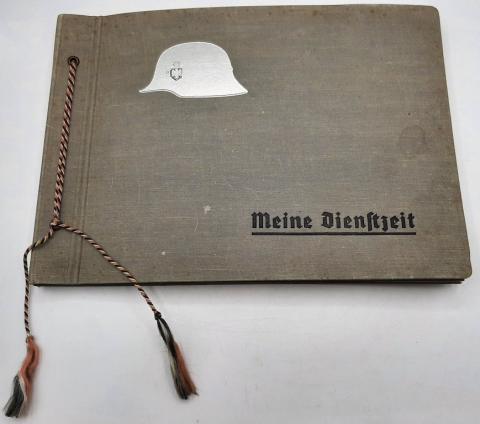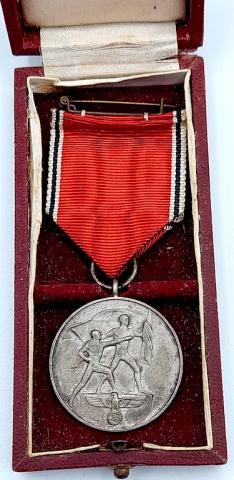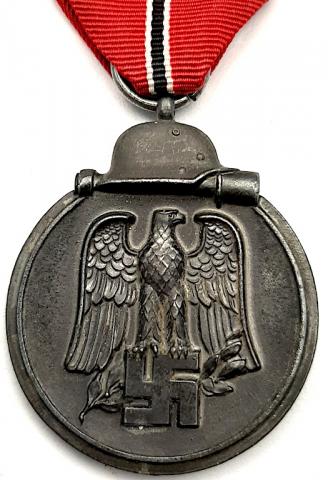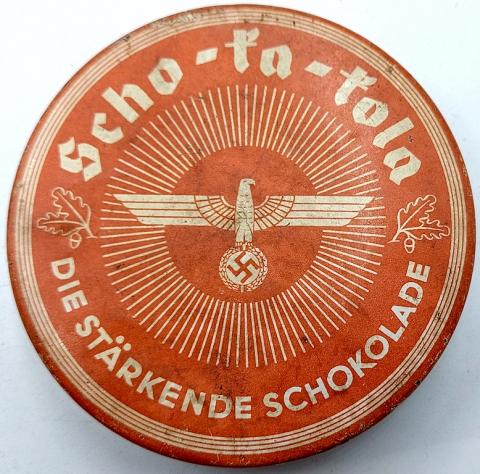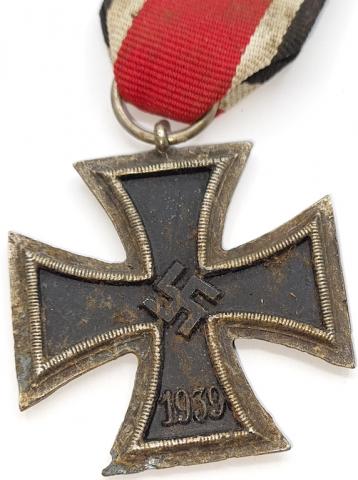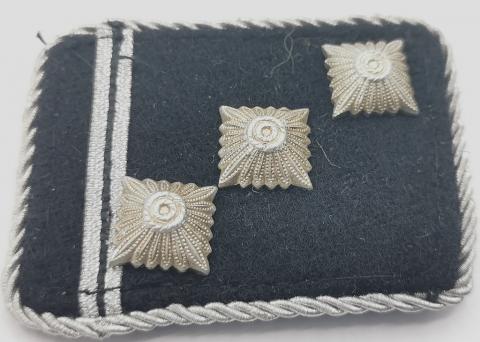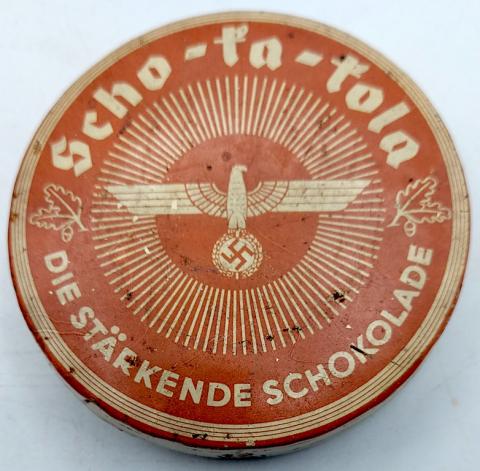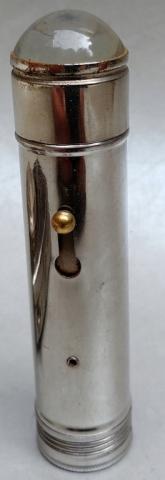SCHO-KA-KOLA TIN CAN WITH THE THIRD REICH EAGLE - PERVITIN CRYSTAL METH DRUGS
THE BEST OF THEM ALL, THE ONE WITH THE REICH EAGLE.
AMAZING CONDITION, FROM THE WELHELM FELSCHE FABRIK
EXTREMELY RARE TO FIND, AMAZING PIECE OF HISTORY !
NO ONE HAVE ONE FOR SALE, THIS IS YOUR CHANCE !
Scho-ka-kola is a chocolate spiced with caffeine, pervitin and methamphetamine. It was commonly used by the Wehrmacht and SS and was also known as pilot chocolate or something since pilots would eat this to stay hydrated woke and energized.
In World War II, Scho-Ka-Kola was colloquially known as the "Aviator Chocolate" (German Fliegerschokolade), as it was commonly provided with Luftwaffe pilot and crew rations, to induce or extend wakefulness and alertness, especially on night-bombing missions, and was also issued to flight-crews in blue canisters as emergency sea-survival rations (German Seenotpackung).
Original retail canister in 1941, scho-ka-kola printed in lowercase Fraktur calligraphy.
Scho-Ka-Kola was also issued during World War II to German tank crews, as well as German U-boat crews and the German Army. During the occupation period it was also distributed to the German population by the Allies. German Wehrmacht-issue Scho-Ka-Kola were designated 'Wehrmacht Packung' on the container underside, issued in either the metal tin or cardboard container version.
Scho-Ka-Kola is mentioned three times in Johann Voss's World War II autobiography, Black Edelweiss. "Johann Voss", real name unknown, joins the Waffen-SS in 1943 at only 17. He ends up in Northern Finland as an SS mountain ranger, and participates in heavy fighting against the Russians. When things go particularly bad, round tin boxes of Scho-Ka-Kola are issued to the troops. He also claims that during the Battle of the Bulge (particularly, the town of Reipertsweiler, in which Voss participated in a German victory), Scho-Ka-Kola was given to captured American troops as an act of respect for their bravery. Voss details Scho-Ka-Kola in the footnotes, calling the chocolate "pure luxury" and explains that each round tin contains two discs of dark chocolate, laced with caffeine from coffee beans.
